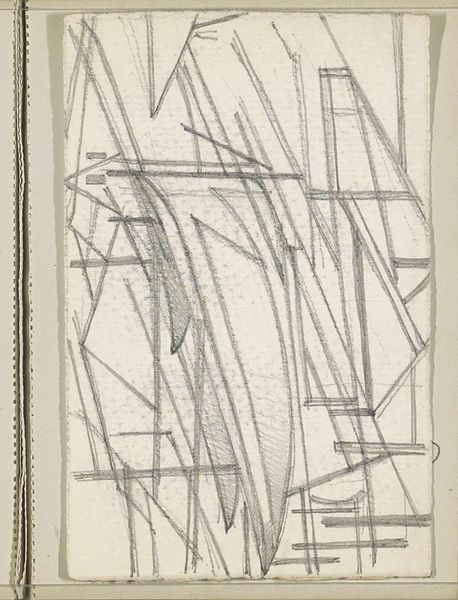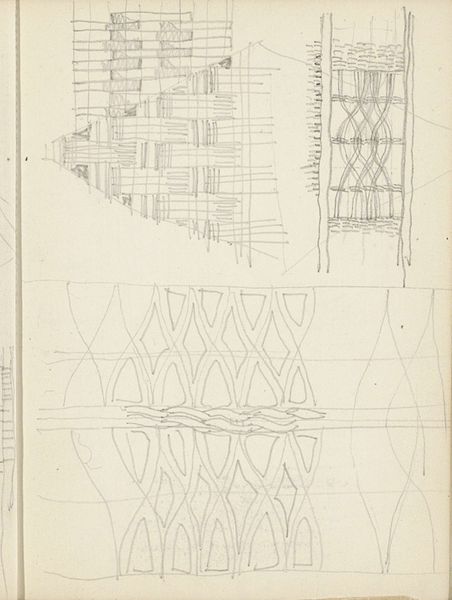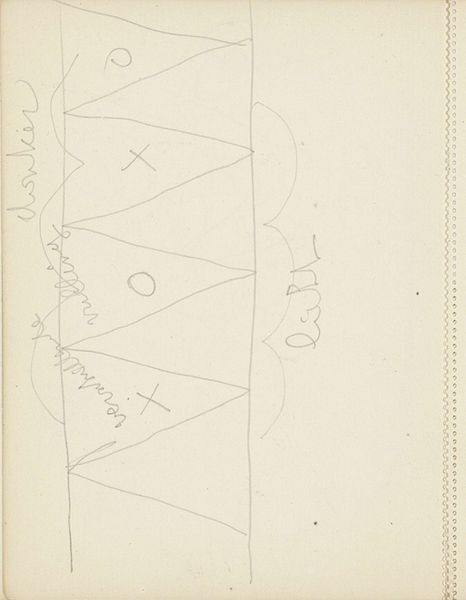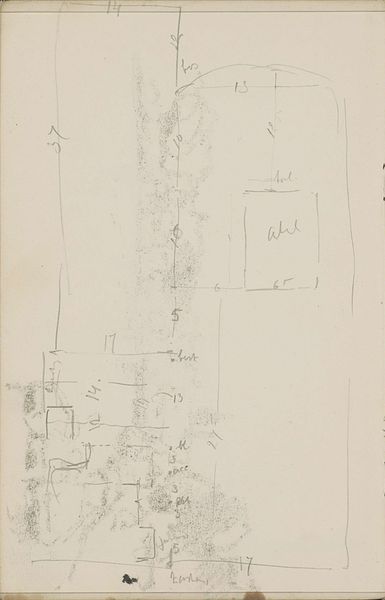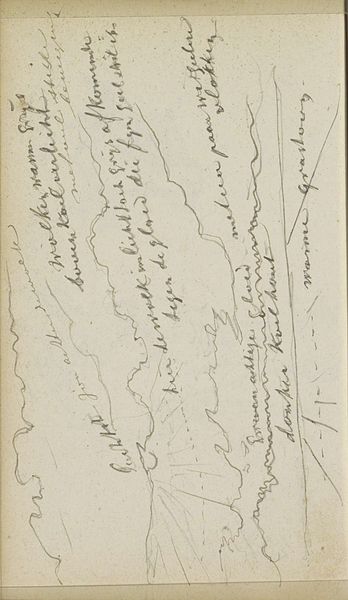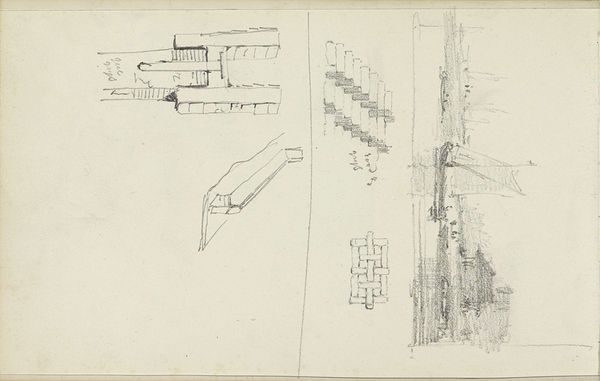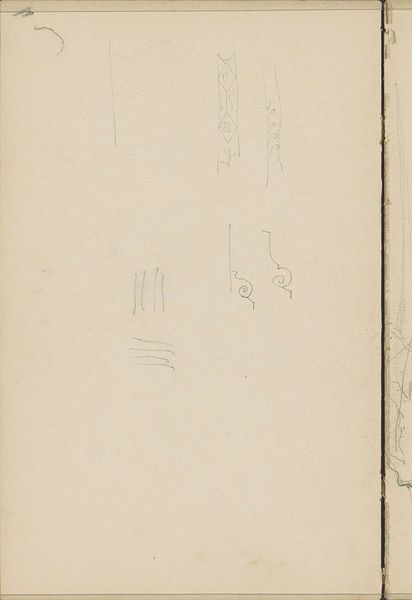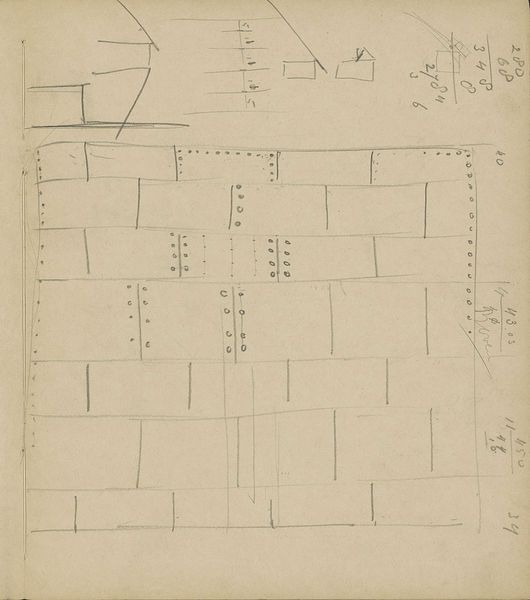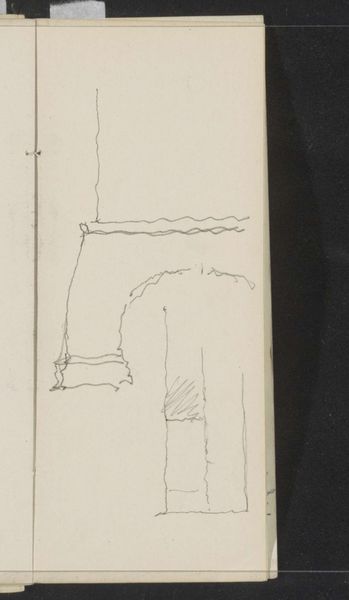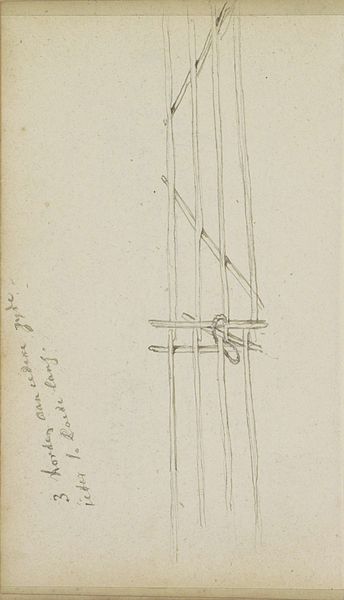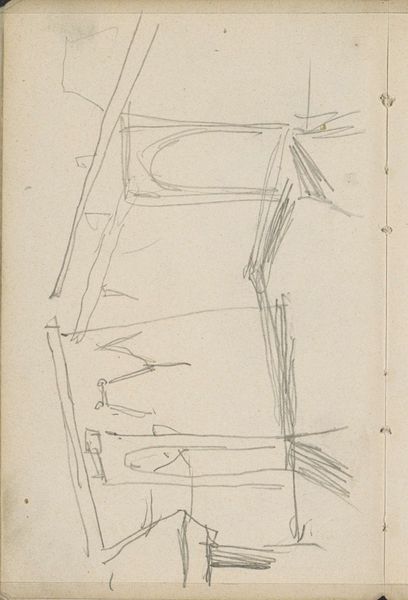
drawing, paper, pencil
#
drawing
#
etching
#
paper
#
form
#
geometric
#
pencil
#
abstraction
#
line
Copyright: Rijks Museum: Open Domain
Curator: This delicate pencil and etching drawing, "Patronen," is from the Rijksmuseum collection. Dating from about 1916 to 1945, its attribution remains with Reijer Stolk. I'm immediately struck by its blend of meticulous geometry and casually jotted text, the interplay is certainly intriguing. Editor: Intriguing indeed! The overall feel for me is dreamlike. These almost hypnotic repeating shapes are rendered with a hesitant hand. The writing adds to that sense of fragmented memory or half-formed intention. It has that feeling that someone drew their mental state more than a real figure. Curator: What’s quite compelling to me is this intersection of "high" artistic abstraction alongside notes that appear to be records of daily life—almost like personal memos. It’s tempting to situate it within the broader development of abstract art and design at the time, where artists experimented with geometric forms. I am fascinated with what these texts represent though. Editor: Absolutely, the text creates a sort of grounded-ness, almost the sensation of a mind in action or perhaps someone dealing with an unknown moment of anxiety. And in those repeating forms, I see the possible influence of ancient symbols used throughout cultures—almost like runes. "Kapella," for example—perhaps hinting at some chapel in the memory. Curator: Interesting associations, the text “Kapella”, could point to the context, perhaps some architectural study, or a landscape as he noted also petrol and other commodities of war... Given the dating, this could relate to anxieties in the interwar or World War II period, when forms of art evolved because of conflicts in their culture and states. It seems worth exploring. The medium, just a drawing, emphasizes that intimacy. Editor: Right, there’s a rawness to its intimacy. Perhaps that name is like an inscription on a talisman and functions more like a memory device tied to other things and anxieties—linking external concepts of hope, desire, or safety to these inner structures or "patterns." I do want to keep dreaming of it because the artist makes an appeal not to reason or a rational explanation but to the language of memory itself, an almost visceral recollection, not clear for sure. Curator: This intersection you brought is wonderful! The dialogue here hints at the personal side of modernity. Editor: A conversation across time, with all our past emotions—haunting and shaping every moment.
Comments
No comments
Be the first to comment and join the conversation on the ultimate creative platform.
